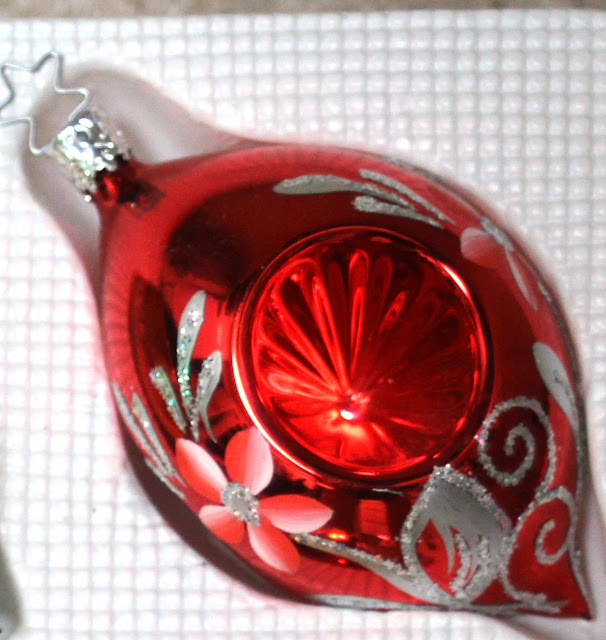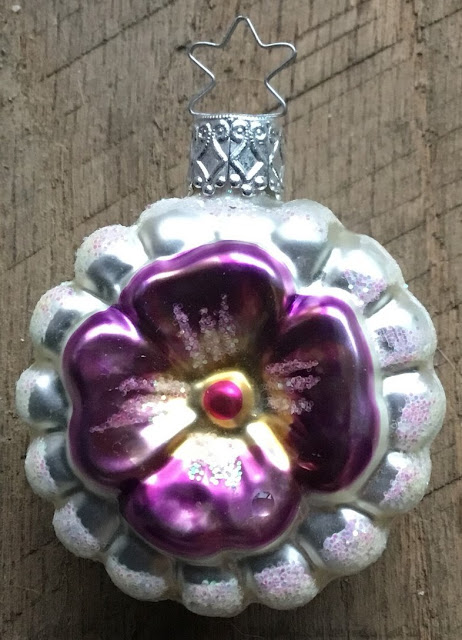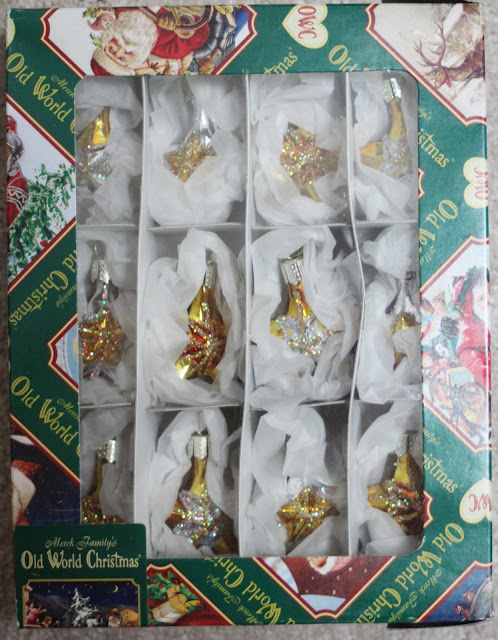We have WAY more Christmas tree ornaments now than we will ever need, given that we don't put up a large tree any more, and also inherited a number of ornaments from my parents. So I thought I would write about the stories behind a few of the more interesting ones.
The ones I'm writing about today are other heirloom and vintage glass ornaments that are either not Inge-Glas and Old World Christmas ornaments, or could not be verified to be those brands. Some I bought, and some inherited from my parents.
This first one fall into that latter category, as Mom and Dad gave it to me in 2012. It says "West Germany" on the top of the hanger, so that would date this Glocken (bell) to before the 3 October 1990 reunification of Germany. I found one via Google Lens described as vintage hand-painted blown mercury glass, champagne-colored with gold, green and brown leaves and gold glitter accents. It measures about 3 inches by 1.75 inches. The next three pictures show the complete design around the bell, which also has a bell-like indentation on the underside.
This heart ornament was also given to me by my parents in 2012. Embossed in the hanger top is "Czechoslovakia," so it dates to 1992 or earlier (The Czech Republic was formed 1 January 1993).
This snowman ornament was received in 2012 from Mom and Dad. The hanger top is embossed "Czech Republic," which dates it to 1993 or later.
The next three ornaments, a Santa and two Christmas trees, were also given to me by my parents in 2012. I found trees via Google Lens similar to these two described as mercury glass, which is also known as silvered glass. True mercury glass is free-blown double-walled, then silvered between the layers with solution containing silver nitrate and other materials, and sealed. It was produced originally around 1840 until at least 1930 in Bohemia (later Czechoslovakia, now the Czech Republic) and Germany, and in England from 1849 to 1855. There are many reproductions currently marketed as "mercury glass," which can be distinguished from antique silvered glass in several ways, including lack of a double wall. I don't think these three are true mercury glass.
"West Germany" is embossed in the top of this blue swirly ornament, so it would have been made prior to the reunification of Germany on 3 October 1990. This is assuming this is the original top. I have photos of this ornament in my tree in 2008, so I have had it at least that long - I'd have to ask my offspring if it might have been on an even earlier (1986 or later) tree. The design looks like it was created with an acrylic pour or dirty pour technique.
The next three ornaments have Inge-Glas Star Crown Tops on them, but I'm not sure those were the original tops. I liked the star top and may have used ones from broken ornaments to replace what was originally there. I haven't found any comparable ornaments using Google Lens. The third ornament (the red one) was purchased to replace another teardrop reflector ornament in a Pyramid (Rauch Industries) set that broke, and I think that was fairly recently, so it might be an Old World Christmas ornament.























































%20Kerr%202.jpg)

